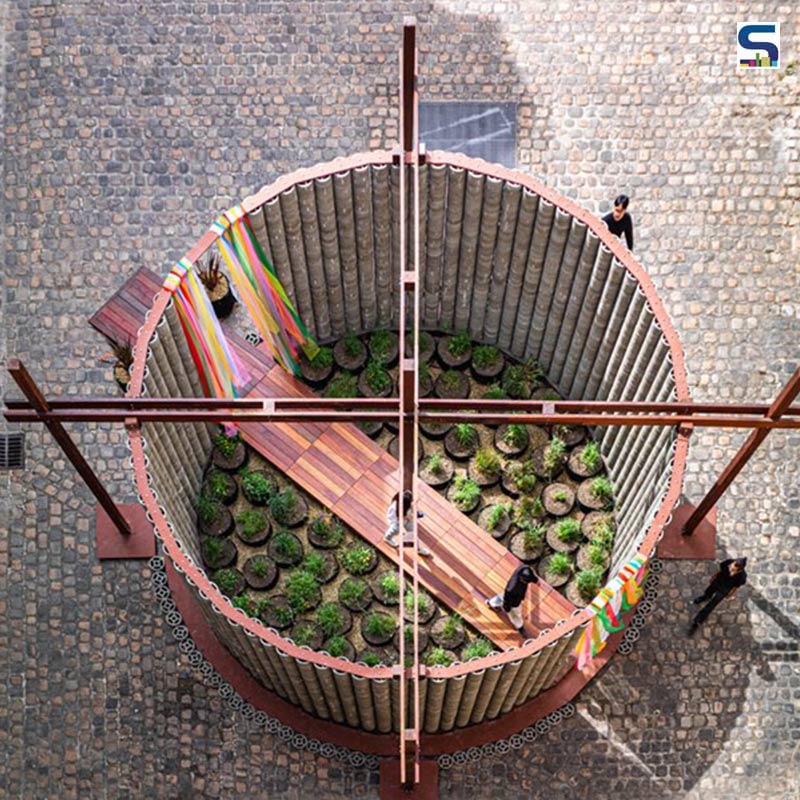
Boonserm Premthada, the founder of Bangkok Project Studio, has built the Elephant Theater as part of the Biennale Architecture and Landscape of Versailles 2022. The project is an architectural application of the firm’s World Elephant Project which explores the ways to upcycle the animal waste into construction material. Premthada used the dung of the domesticated elephants that spread along the roads of Thailand’s Ta Klang Village to create these bricks. He transported the bricks to France to create the pavilion. According to Premthada, winner of The Design Prize 2021, the plant-eating animals generally “feed on Napier grass, their droppings are fibrous and therefore ideal for use in brickmaking.” Read more about the project below at SURFACES REPORTER (SR):
Also Read: Bricks Made of 577,367 Pounds of Recycled Waste adorn this Manhattan Building’s Facade | The West
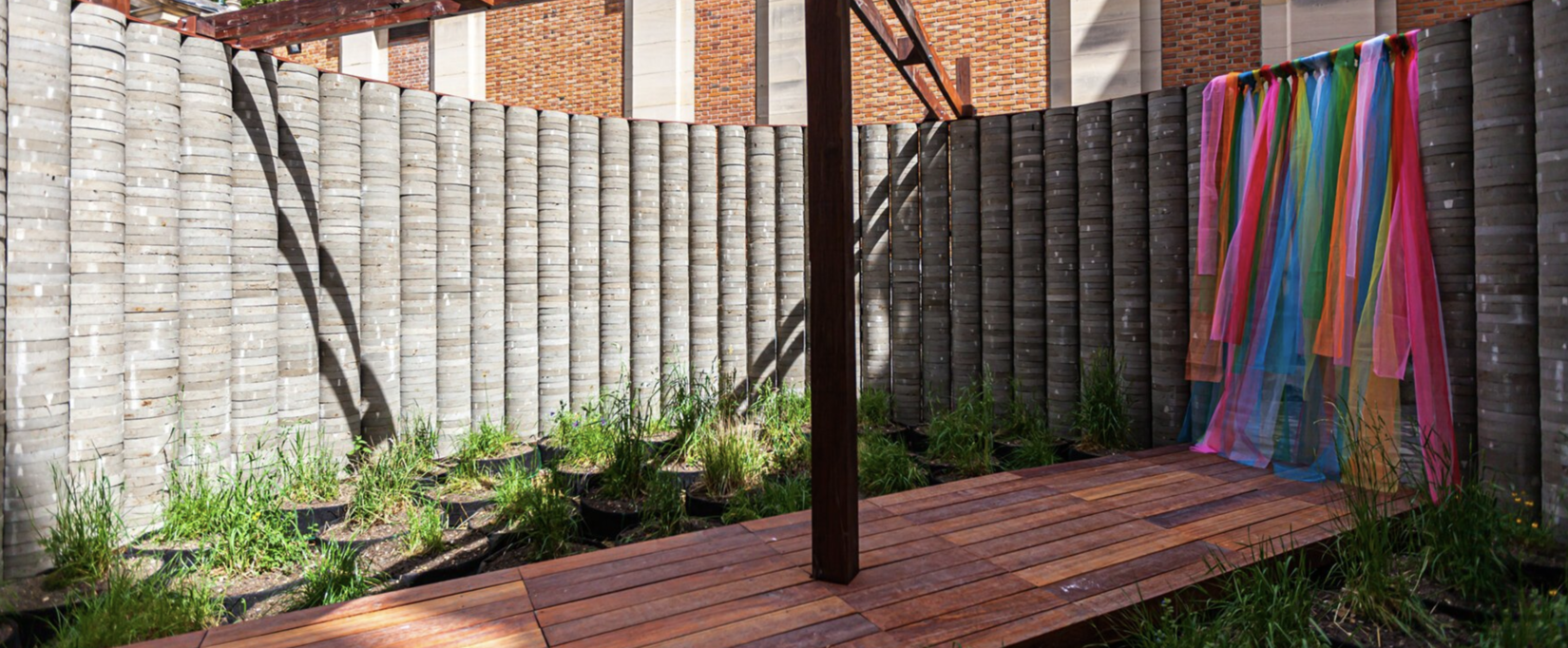
Large, Round Bricks
Each of the circular bricks created by Premthada using animal waste measures 255 millimeters in diameter and has a thickness of 50 millimeters.
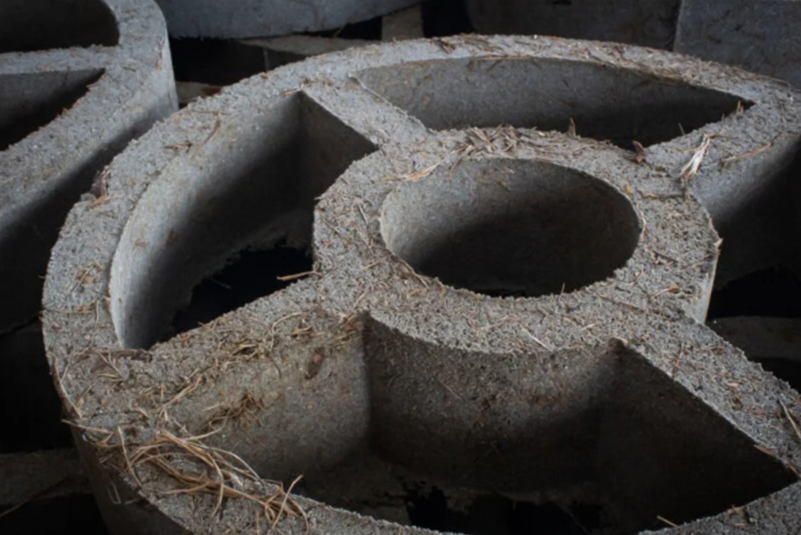 The brick has a vertical gap of steel reinforcement that gives enough strength to it. These circular bricks are stacked on top of one another that giving a huge, column-like appearance.
The brick has a vertical gap of steel reinforcement that gives enough strength to it. These circular bricks are stacked on top of one another that giving a huge, column-like appearance.
A Secret Garden
The pavilion contains a secret garden inside it, which has open sky sunlight over it that allows air to circulate through the structure.
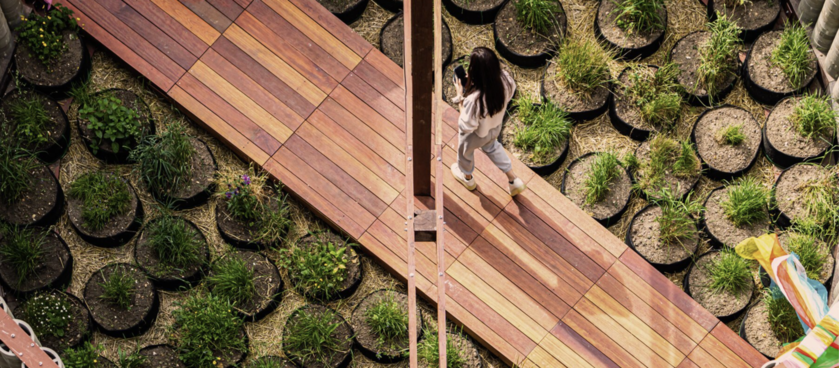 The walking pathway is enclosed by a group of plant pots.
The walking pathway is enclosed by a group of plant pots.
Upcycling of Waste Into Brick
Boonserm Premthada notes that the Elephants residing in the Thai village are fed locally-grown Napier grass, which contains a large amount of plant fiber- a perfect construction material. He further explains that the elephants have round droppings with a diameter of 180 millimeters. Further, the dark green colour of these droppings later turns into the brownish green after exposure to sun and air.
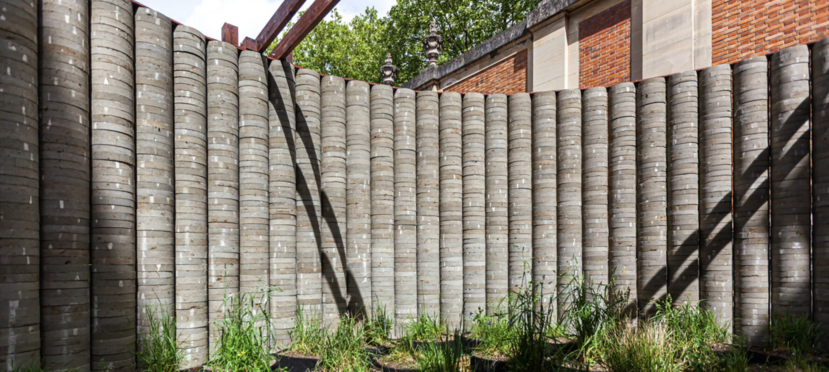 These bricks are handcrafted one by one using elephant dung. After getting the elephant dung from the villagers, the design team dried it and then put it in a large blender to cut up the fibres. Then, it is mixed with cement, sand and little water and transferred into steel molds.
These bricks are handcrafted one by one using elephant dung. After getting the elephant dung from the villagers, the design team dried it and then put it in a large blender to cut up the fibres. Then, it is mixed with cement, sand and little water and transferred into steel molds.
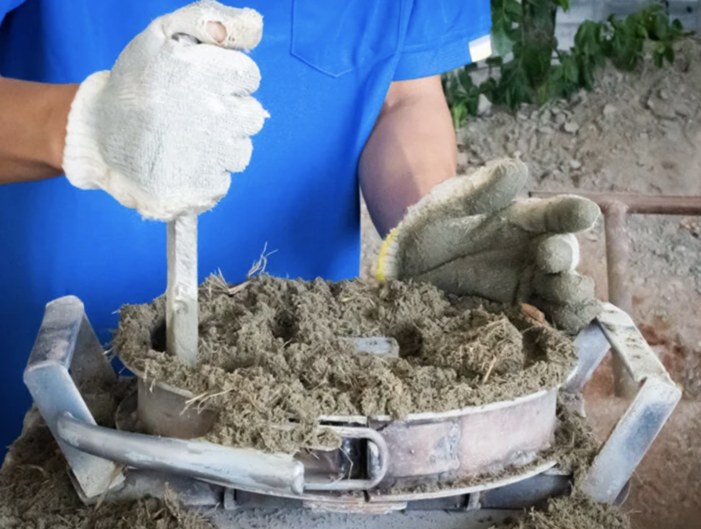 The mixture is kept in the mold layer by layer, ensuring each layer is thick enough before continuing with the next layer until the mold is entirely filled. After shaping the bricks into a mold, these are sun-dried for seven days, to minimize the carbon dioxide emissions caused by the firing of bricks. During the air-drying of bricks, the firm cured them by watering them.
The mixture is kept in the mold layer by layer, ensuring each layer is thick enough before continuing with the next layer until the mold is entirely filled. After shaping the bricks into a mold, these are sun-dried for seven days, to minimize the carbon dioxide emissions caused by the firing of bricks. During the air-drying of bricks, the firm cured them by watering them.
Also Read: Architect Upcycles Textile Waste into Decorative Bricks | FabBRICK
 These are then air-dried for another seven days so that they become sturdy and strong. The last step is to check the strength and weight support capacity of the bricks.
These are then air-dried for another seven days so that they become sturdy and strong. The last step is to check the strength and weight support capacity of the bricks.
Later, bricks are assembled, disassembled and transported. These are totally degradable and decomposed naturally when their life cycle ends.
Project Details
Project Name: The Elephant Theater
Architecture Firm: Bangkok Project Studio / Boonserm Premthada
Location: Bap!, the Biennale d’architecture et de paysage d’Île-de-France 2022, Versailles, France
Curator: Jana Revedin, Marie-Hélène Contal
Engineer: Preecha Suvaparpkul
Exhibition Host: Cité de l’architecture & du patrimoine, Île-de-France Region
Photography: Spaceshift Studio
Completion: 2022
Keep reading SURFACES REPORTER for more such articles and stories.
Join us in SOCIAL MEDIA to stay updated
SR FACEBOOK | SR LINKEDIN | SR INSTAGRAM | SR YOUTUBE
Further, Subscribe to our magazine | Sign Up for the FREE Surfaces Reporter Magazine Newsletter
Also, check out Surfaces Reporter’s encouraging, exciting and educational WEBINARS here.
You may also like to read about:
Perfect Sustainable Design: Bricks Out Of Waste
Researchers Turn Agricultural Waste Into Ecofriendly Bricks To Solve Rural Housing Crisis Bio-Brick
And more…